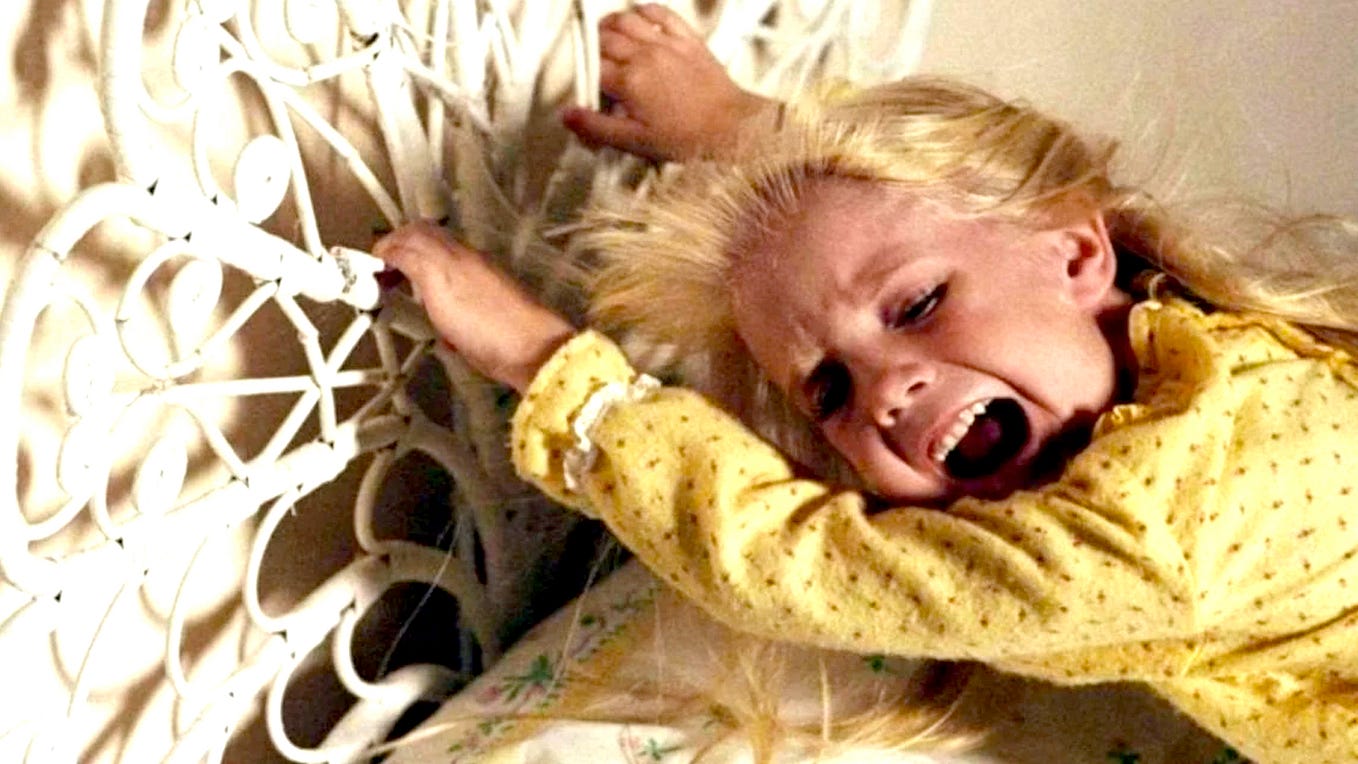Strasberg’s Method Acting Approach
A guide to the well-known acting technique, debunking common misconceptions
Lee Strasberg’s (1901 to 1982) take on the development of Stanislavski’s System (‘The Method’) focused on a more psychological element to acting — becoming the character from the inside out.
Although Strasberg is not as well known for his directing as he is for his work as a drama practitioner and acting coach, he directed many productions, most of them with the Group Theatre, which he co-founded in 1931.
In 1949 he assumed the Directorship of the Actor’s Studio, where he taught many of his students, and directed at least thirty-five productions — only two of them at the Actor’s Studio.
Strasberg was as much a perfectionist with his directing as he was with his actor training — Richard Schickel, said of Strasberg that:
“… he became a director more preoccupied with getting his actors to work in the ‘correct’ way than he was in shaping the overall presentation.”
Indeed, Strasberg did, as both a director and an acting coach, have a specific ideal as to how an actor should work:
“That is the actor’s job. He brings non-existent things alive onstage. He makes them real to himself in order to convey that reality to the audience.”
He would push his actors to the limits as to what they could achieve, in order to portray the emotion that he believed they should portray.
If the actor believes the emotion and feels the emotion they are supposed to be portraying to the audience, then it’s a reasonable assumption that the audience will grasp the emotion and understand what the actor is trying to represent and, in turn, relate to them.
An example of Strasberg’s somewhat extreme directing is seen in his production of Men in White in 1933, as described by Maria Shevtsova:
“Throughout the summer of 1933, Strasberg drilled his actors like a sergeant, taking them through exercises and improvisations on hospital routine. It was a historic case of directorial overkill, but it paid off: the production gleamed with ensemble give-and-take, creating the illusion of a miniature world, a bustling microcosm. The comings and goings of patients and staff were rendered with exacting detail and with incidental natural sounds, background chatter, bells, sirens…”
The exercises that Shevtsova briefly mentioned were the foundation for Strasberg’s direction, and it is in these exercises that Method Acting can be understood and accomplished.
The first exercise that must be repeated each rehearsal is Relaxation.
Strasberg insisted upon all actors being relaxed during rehearsals with each other and themselves, since it is through relaxation that tension disappears and concentration can be captured and held:
“Actors tend to be sabotaged by tensions and distraction, so these are important aides in process.”
Steve Vineberg recognised the importance of the departure of tension, since he made the observation that Strasberg “often took tension as a sign of emotional excessiveness and his relaxation exercises fought against it”.
Tension was, to Strasberg, the “occupational disease” of the actor, and defined it as the unnecessary use of muscles — or the use of muscles that do not portray to the audience the psychological changes that the character/actor is going through at a certain point.
The exercise itself is simple, carried out first during every rehearsal: the actor must first sit in a straight-backed, armless chair, and assume a comfortable position.
The actor would then, upon Strasberg’s direction, go through each part of their body, find the tension in those muscles, and release it.
Then the actor would be asked to once again go through each part of their body and extend it, move it around, pushing its limits, then to release the tensions once more.
Strasberg knew that the tension released from the body would go to the vocal chords, and would then ask his actors to vocalise with either a sharp “hah” sound or a long “ahh” sound.
As the exercise is repeated, the actor can automatically sense any unnecessary tension in their bodies whilst rehearsing or acting onstage.
The second and possibly most well-known of the Method exercises Strasberg used in his rehearsals as director are Sense Memory and Affective Memory.
It is a common misinterpretation that actors must embody the character that they are playing even when they are not rehearsing or onstage.
An example of this is Daniel Day-Lewis, who is infamous for ‘becoming’ his characters and having difficulty ‘getting out of character’.
Whilst playing Hamlet, he claims to have actually seen the ghost of his own father and left the stage whilst the play was on.
This begs the question, does the actor actually experience the emotion he is portraying, or should he demonstrate the emotion without experiencing it?
Affective Memory uses both the actor’s experience and their imagination, combining both the experience and the demonstration of the emotion, a safer, though not fool-proof, method of achieving the emotion successfully.
With Affective Memory, the actor must draw upon their own experiences to find an emotion resembling that which they want to portray to the audience.
However, in order to counteract any psychological traumas that could occur when dredging up a past, possibly unpleasant, memory, Strasberg insisted upon using memories from no less than seven years ago.
Method actor and Actor’s Studio alumni Gene Wilder recalls one of his most memorable experiences of Affective Memory — he was asked to recall a time when he felt pain, and used a memory of having his tooth drilled by a dentist:
“After three or four minutes of recalling that drill — how it looked and how it smelled and even how it tasted as it bored into my tooth — I felt the pain so sharply that tears came to my eyes. Now I understood what a sense memory was.”
Wilder refers to Sense Memory, which helped him to achieve his Affective Memory.
By recollecting the senses of his memory — sounds, sights, tastes, smells, feelings — he was able to feel the physical pain of that moment.
The third exercise that Strasberg would use, on occasion, whilst he was directing a production, was one used by Maria Ouspenskaya (or, as she demanded to be called, Madame Ouspenskaya).
This was the almost juvenile animal exercise, whereby the actors would “look for the elements necessary to characterise and realise the animal [that they were portraying].”
The animal exercise was simply an exercise whereby the actor studies an animal, any animal, and mimic it — its posture, movement, eye contact, facial expressions, gestures, pace, gait, et cetera.
Strasberg used this exercise in his rehearsals to lower the actors’ inhibitions — if they were playing an animal, they could do things that were not done usually by humans.
In studying the animals, they must study their character, since, as Robert H. Hethmom observed:
“Actors have a tendency to approach any part with the assumption that they resemble that character. Often they leave out an important part of their characterisation because they do not perceive the difference between themselves and the character.”
Therefore, if they use the animal exercise for pinpointing different things that they have to change about themselves to suit their character (such as posture, movement, eye contact, facial expressions, gestures, pace, gait, et cetera), their character will seem to be less them playing a character but them becoming a character, realistically and convincingly.
The fourth exercise Strasberg uses in his rehearsals is fundamental to creating a good performance, and must be continued onstage.
Concentration is paramount to every performance, whether or not they use Strasberg’s Method.
Strasberg originally got the idea for his version of Concentration onstage and during rehearsals from Stanislavski’s concept of the ‘Fourth Wall’ that separates the actors from the audience.
Stage fright usually occurs when the actors are afraid and aware of the audience, but by strengthening their concentration, they can act without acknowledging the audience, with their full attention to the happenings onstage.
Upon achieving full Concentration to the stage, the actor can act using Affective Memory and can concentrate on the physical movements of their character appropriately, as they did during the animal exercise.
Concentration also “helps the actor to develop and maintain relaxation by preventing extraneous thoughts that produce muscle tension”, so it also links with Strasberg’s Relaxation exercise.
If an actor finds their concentration faltering onstage, they can focus on an object on their side of the footlights to ‘ignore’ the audience.
Finally, an exercise to achieve the purest emotions, Strasberg’s Private Moment exercise, derived from Stanislavski’s Public Solitude exercise.
This exercise involves “doing something others never see you do and that you normally alter considerably if you thought they were as a means of losing self-consciousness in the presence of an audience.”
For example, Strasberg remembers:
“… a young actress who had trouble expressing what she felt. She brought in a private moment where she was lying in bed listening to Turkish music. She started to dance. Hot dancing! In a way that was startling. From that point on, her voice on the stage started to change, she had more vocal colours, and we began to get a fullness of response.”
This example shows the more therapeutic element of this exercise, in exposing a somewhat embarrassing moment, the ‘young actress’ is able to free her emotions, and her stage-work benefitted from this vocally and responsively.
Strasberg knew that most productions are supposed to be viewed by the audience without the character’s knowledge.
That is, the audience views scenes as a ‘fly on the wall’.
So, in order to capture the privacy in public, Strasberg would use his Private Moment exercise to practice this unawareness of the audience.
However, Robert Barton claims that:
“Many believe that the techniques work better film than in the theatre. Onstage actors may appear to drop out of the scene to get their ‘moments’ as they search within themselves and in fact to be preoccupied with themselves.”
I respectfully disagree, since with the required and necessary concentration that every respected actor needs, the actor shouldn’t ‘drop out of the scene’ in order to find their Private Moment.
Instead, using the Concentration that they have learned to develop during Strasberg’s rehearsals (or, indeed, any other director’s rehearsals), they should be able to maintain their character whilst searching themselves for an appropriate moment, or have a private moment already prepared.
Strasberg’s approach to directing is startlingly similar to his tactics when training actors — he uses many of the same exercises when rehearsing for a play as he does when he is coaching his students in Method Acting.
Each of his Method exercises can, and should, be modified to suit each specific production, with the explicit aims of the production considered at all times, and can also be used as more general actor training exercises, covering all of the bases that an actor must know — concentration, relaxation and self-awareness.
Bibliography
A Dream of Passion: The Development of the Method by Lee Strasberg, 1988, Plume Books
The End of Acting: A Radical View by Richard Hornby, 1992, Applause Books
Twentieth Century Actor Training by Alison Hodge, 1999, Routledge
Fifty Key Directors by Shomit Mitter and Maria Shevtsova, 2005, Routledge
Strasberg at the Actor’s Studio: Tape Recorded Sessions by Lee Strasberg and Robert H. Hethmom, 1992, Theatre Communications Group Inc.
Acting: Onstage and Off by Robert Barton, 1993, Thompson Learning
The Theatre: A Concise History by Phyllis Hartnoll, 1998, Thames & Hudson
On Method Acting Procedures — Method Acting Procedures
Jason Bennett Actor Workshop, On Strasberg’s history — Lee Strasberg
If you’re a business owner who’s keen to grow and succeed, download my free PDF: 23 Ways to Promote Your Product.









